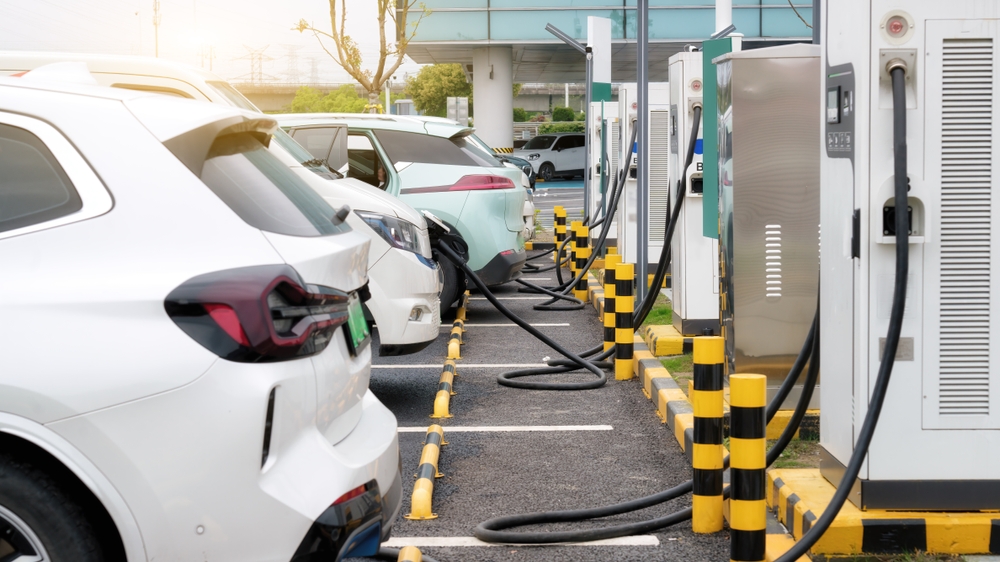The road transport sector has made significant strides in the past several years towards a Paris Agreement-aligned emissions trajectory. A new study by the International Council on Clean Transportation (ICCT), secretariat of the Accelerating to Zero Coalition, offers a comprehensive update on the policies and market trends that have led to this accelerated uptake in zero-emission vehicles (ZEVs) worldwide.
In many markets, ZEV adoption is approaching a tipping point and reaching the mainstream consumer, leading to estimates that global fossil fuel consumption and CO2 emissions from the road transport sector could peak as soon as this year. International collaborative frameworks, like the ZEV Declaration, are playing an increasingly vital role in the transition, with a growing number of national government signatories adopting or exploring supply-side regulatory measures to expedite the transition and match ambition with action.

Figure 1: Projected global well-to-wheel CO2 emissions from road transport compared with an emissions pathway compatible with Paris Agreement goals of keeping warming under 2 °C
Notable policy developments
For governments, one of the clearest ways to turn ambition into action is through supply-side regulations, including fuel economy standards and ZEV sales requirements. As we near a tipping point for ZEV adoption, it’s important to take stock of our collective progress to date and identify what more needs to be achieved in order to reach the goals of the Paris Agreement.
At the forefront of this transition stands the European Union, whose CO2 emissions standards are predicted to steer road transport emissions towards a peak in 2025. Felipe Rodríguez, deputy managing director of ICCT Europe, reflected, “Our analysis indicates that Europe’s road transport sector is at a critical juncture.”
He underscores that the transition to electric vehicles is instrumental to achieving energy efficiency and lower emissions. In fact, European Union regulations, specifically the CO2 standards for cars and vans adopted in 2023 combined with the 2024 truck and bus standards review, have already closed 73% of the gap needed to align road transport with a Paris-compatible emissions trajectory.
Yet despite positive progress, these EU-wide regulations can be threatened by changing political interests. A proposed weakening of the CO2 emissions targets for car manufacturers—measuring them against emission averages between 2025–2027 rather than on 2025 alone—could slow down the ZEV market acceleration. Peter Mock, managing director of ICCT Europe, says that “implementing this averaging measure will leave the European car industry with a weaker regulatory framework, impacting its competitiveness.”
As one of the world’s largest car markets, India has also implemented emission-saving regulations. The Corporate Average Fuel Economy (CAFE) standards aim to reduce fuel consumption, oil dependence, CO2 emissions, and air pollution by requiring manufacturers to meet increasingly stringent fleet-average CO2 targets for new vehicles. The country has proposed draft CAFE III standards for cars that would apply to model years 2027 through 2032. “These norms are important supply-side regulations for accelerating the electrification of transport in India,” says Amit Bhatt, managing director of ICCT India. If India adopts a strong final rule, he goes on to say that “the norms are expected to be stringent enough to drive India’s transition to electric vehicles.”
In markets like the United Kingdom and Canada, progress is well underway. In the UK, the ZEV mandate, which took effect in 2024, will require 80% of new cars and 70% of new vans sold to be ZEVs by 2030, with further ambition to achieve 100% by 2035 proposed. Canada’s recently adopted Electric Vehicle Availability Standard cements their ambition with binding targets, beginning with a 20% ZEV sales share in 2026 and increasing each year to reach 100% by 2035.
In other markets, including Chile and Mexico, there is a substantial “regulatory gap” between adopted supply-side regulations and the aspirational targets those countries have set for light-duty electrification sales. Although both countries have signed the Declaration, their performance-based standards are not predicted to be stringent enough to drive electrification at the rate required to meet this target. However, growing EV markets in both jurisdictions, including a remarkable 183% increase in electric car sales from 2023 to 2024 in Chile and an 84% year-over-year increase in Mexico, suggest the market could grow even faster if backed by more stringent regulations.
Further commitment is needed
While progress has been substantial, this latest analysis clearly illustrates the global gap between government action and the necessary ZEV trajectories to achieve Paris climate goals. Furthermore, the data shows the persistence of regional disparities in ZEV adoption.
Many signatories to the ZEV Declaration offer compelling examples of how commitments backed by strong policy frameworks can set the stage for the transition to ZEVs. In other markets that have not yet signed the Declaration and implemented strong supply-side regulations, there is additional untapped potential towards a cleaner future.

